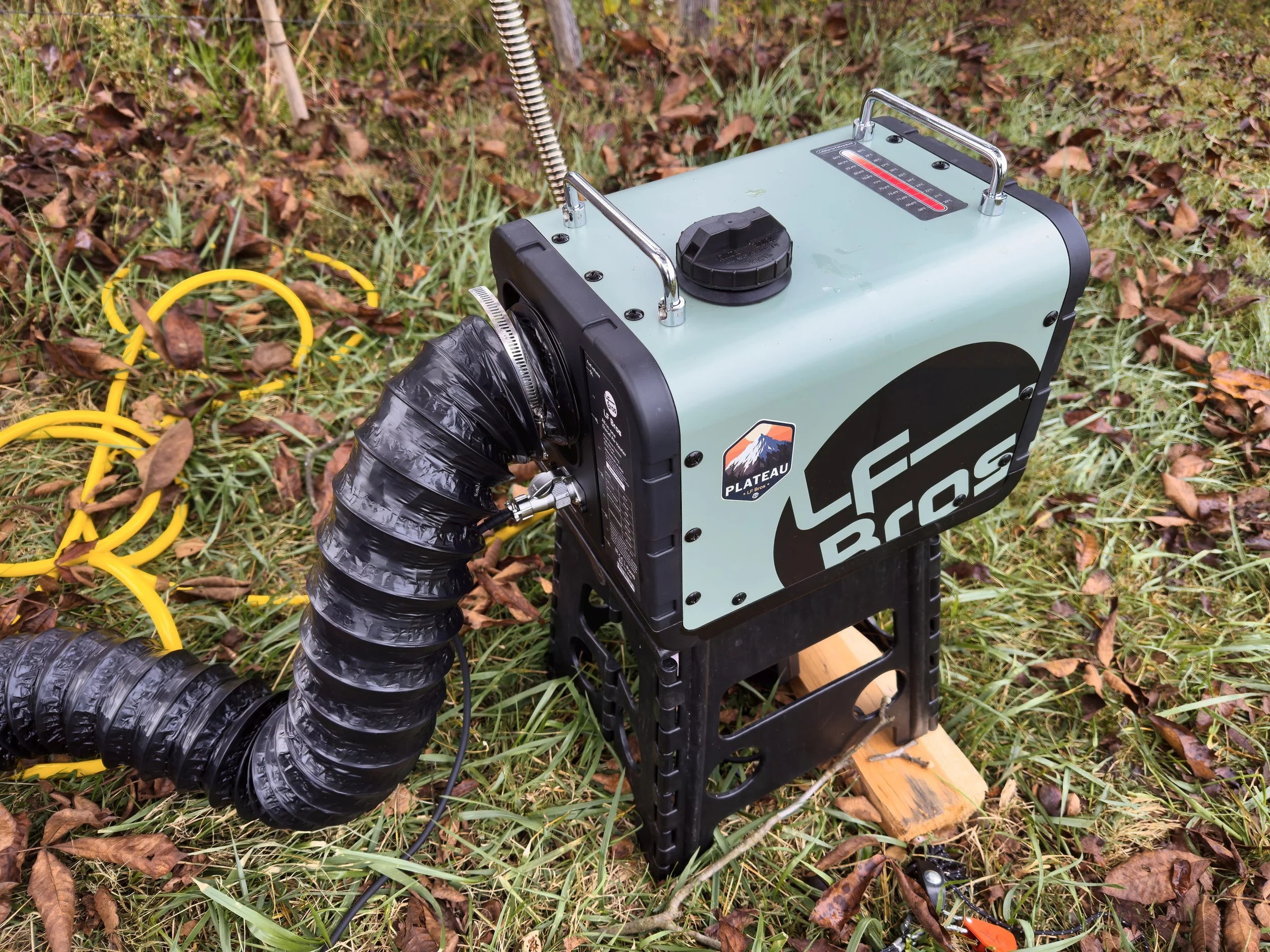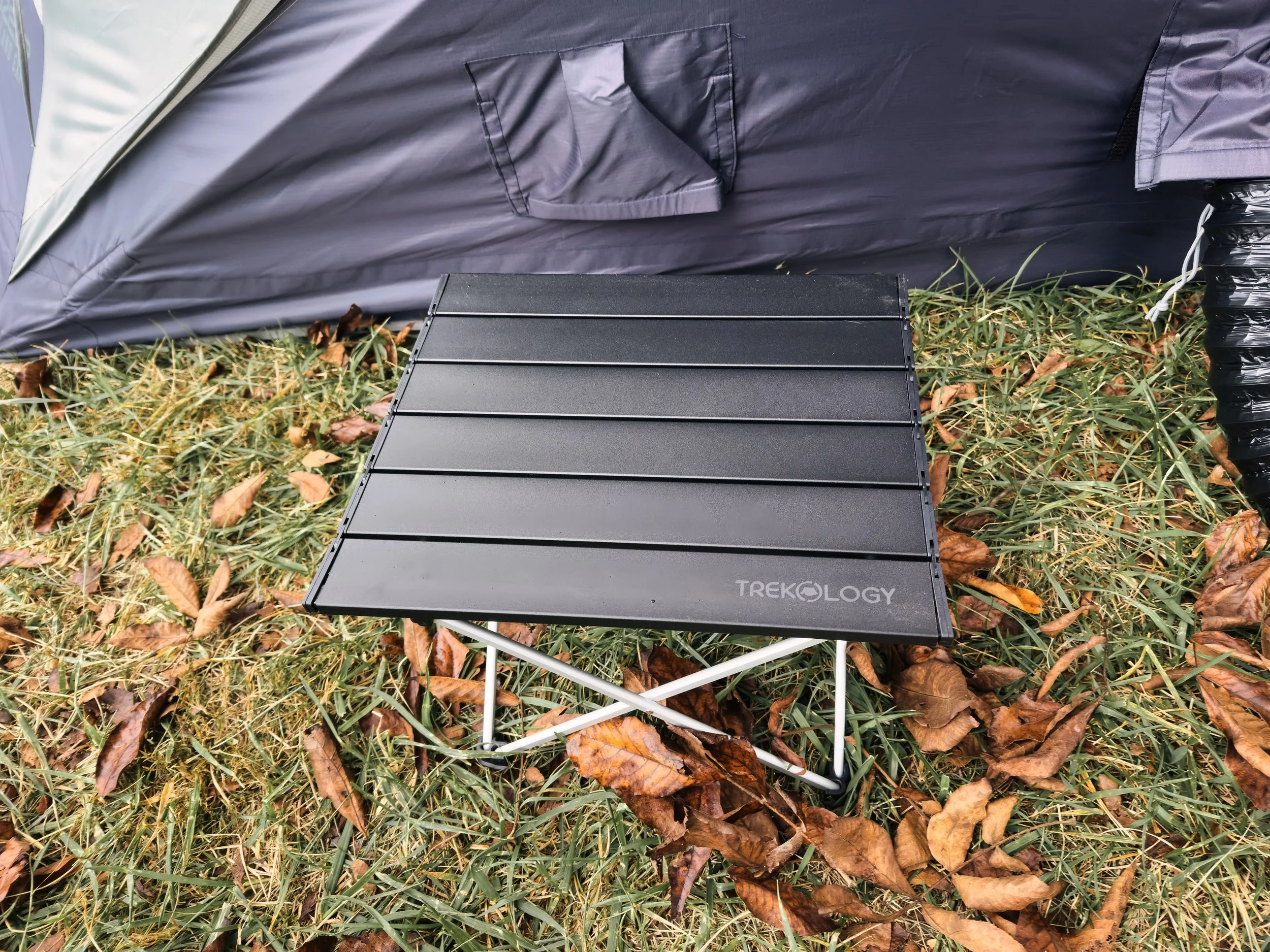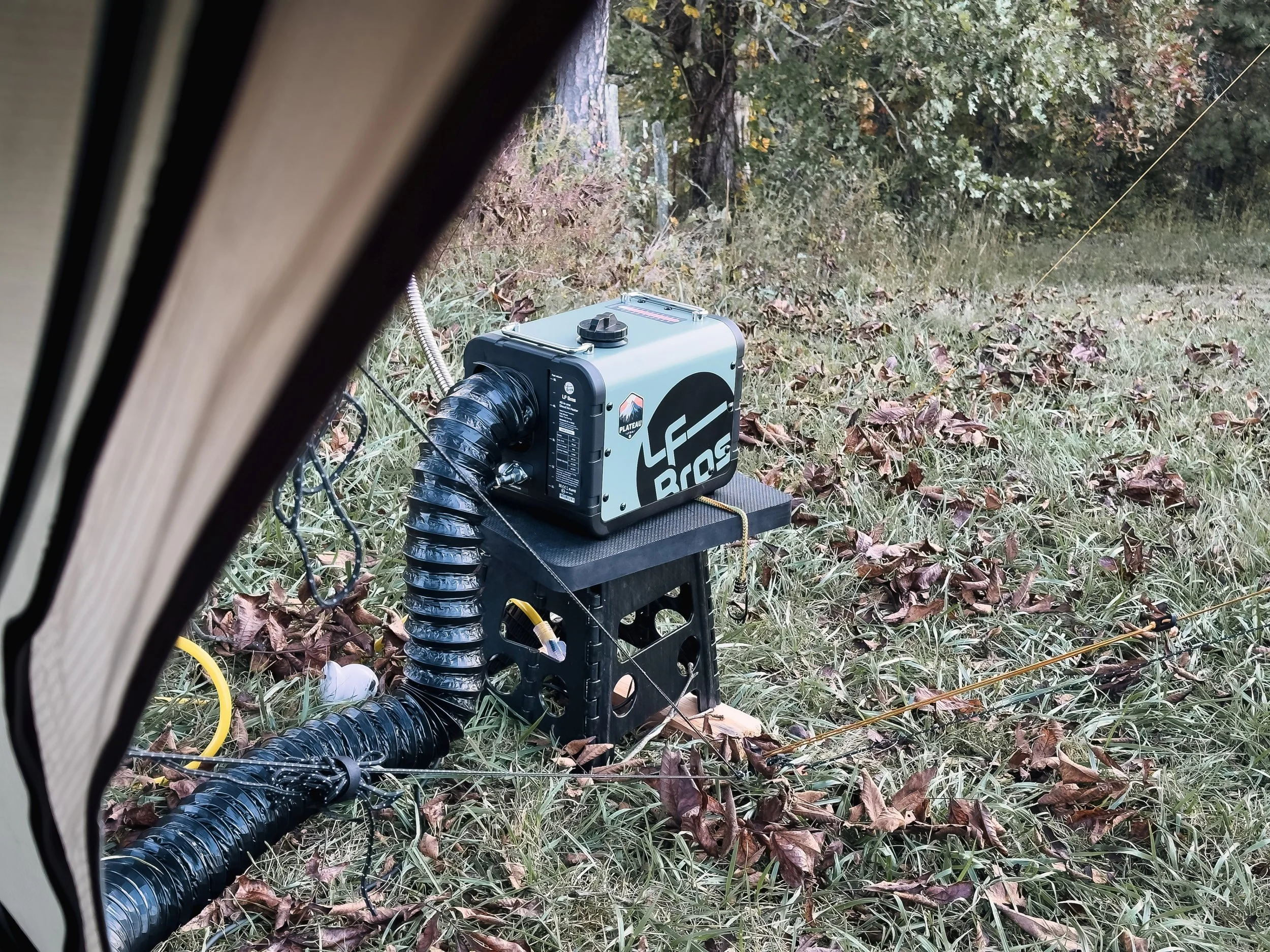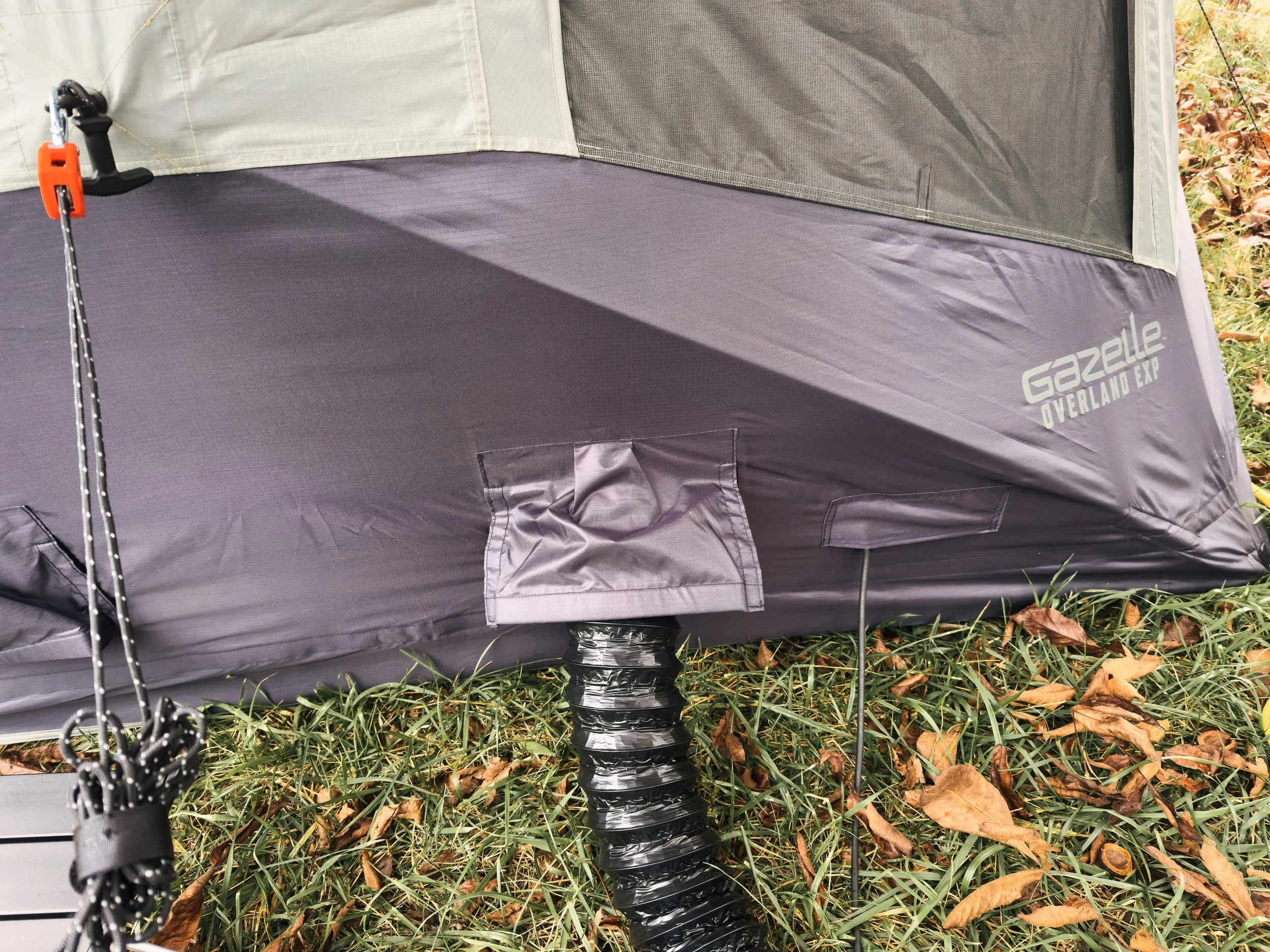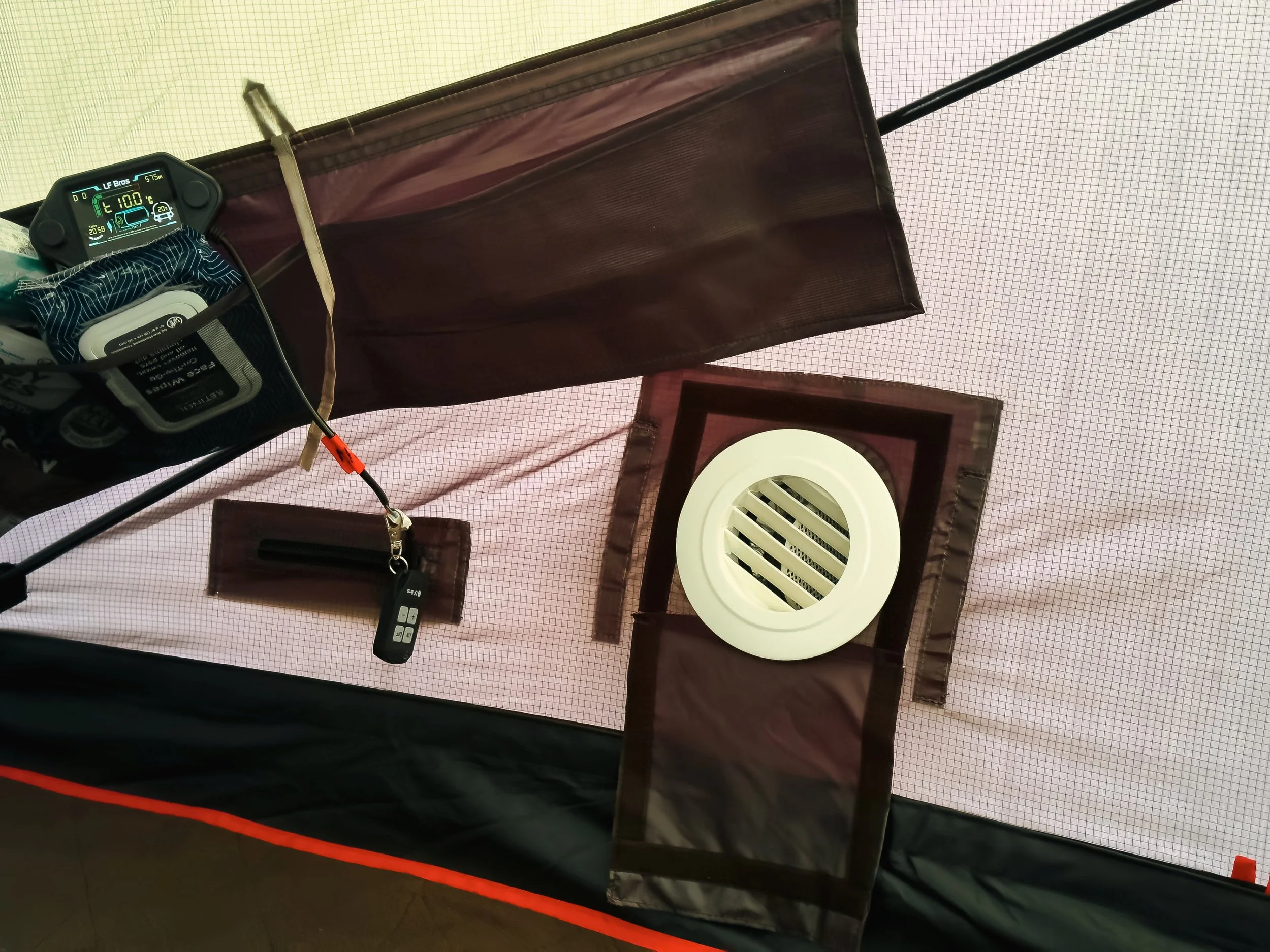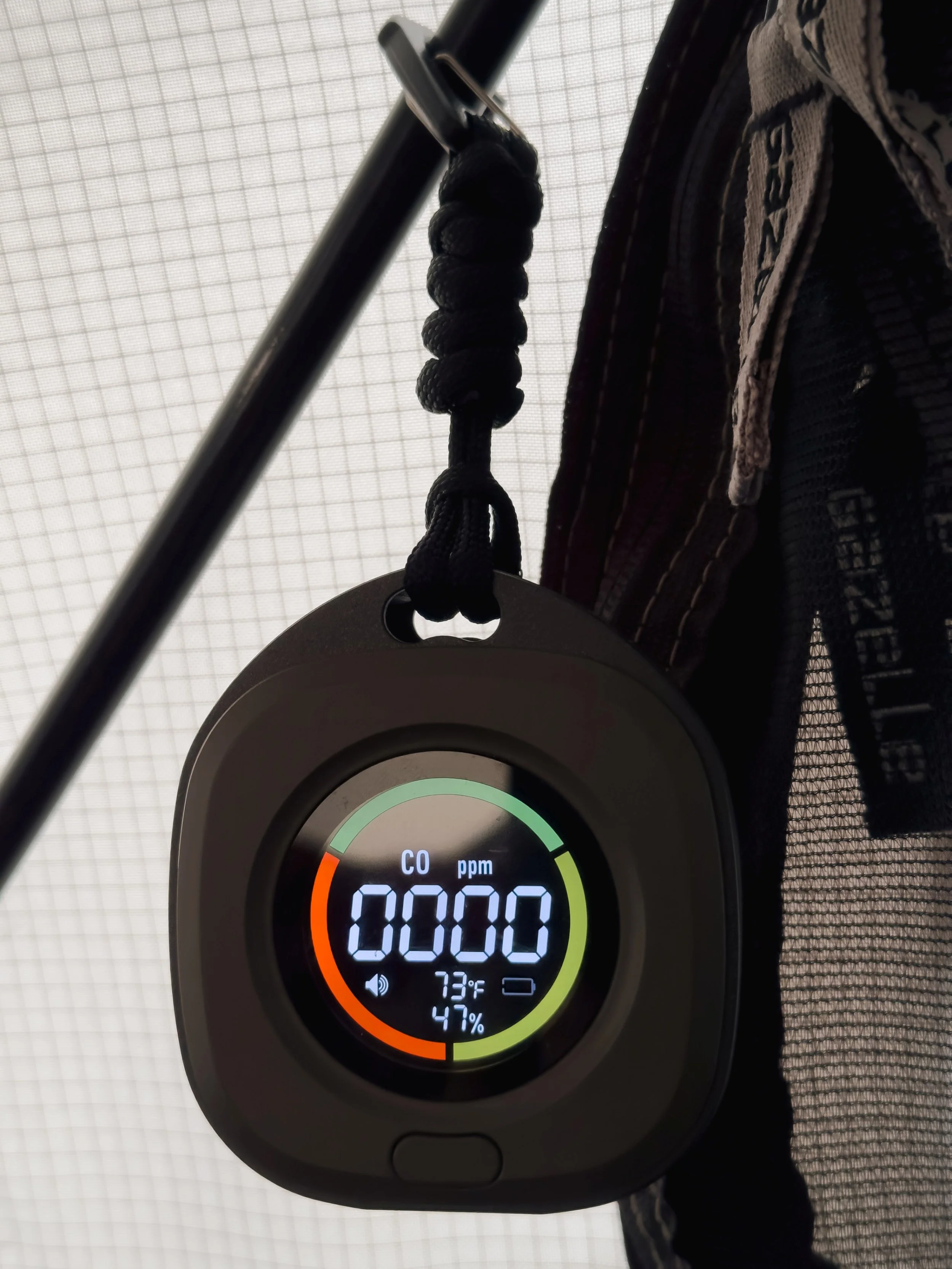LF Bros N2-T Diesel Heater: Field Notes from a Cold Tent
Smokey Mountains Mangalista River Ranch, Waynesville, North Carolina
When nights drop below freezing and you’re done pretending to enjoy “roughing it,” the LF Bros N2-T 5 kW diesel heater is the civilized way out. It runs on 12 V (or 24 V with an adapter) and includes a 110 V transformer for home or garage use. Output runs about 4,700–17,000 BTU, fuel consumption 0.18–0.53 L/hr, and it’s rated to –40 °F. Plateau mode keeps it happy up to 17,000 ft.
Expect to pay around $350 for the N2-T, which adds a timer mode to the standard controller so you can schedule start and stop times. The regular N2 (around $250) has the same digital controller but no timer scheduling—temperature-based only.
Quick lineup check:
N2 Pro – same heater core, silent pump, altitude tuning, better build.
N3 – further refinement for quiet and high-altitude performance.
N2 – same output, lacks the timer, but still has full temperature control.
What They Didn’t Include (But You’ll Need Anyway)
The included duct is a joke: short, rigid, and useless. Get a 3–4 inch aluminum-foil insulated duct, at least 8 feet long. The length keeps the heater safely away from your tent so the exhaust stays outside.
You’ll also need a soffit vent or louvered port to feed warm air inside. My Gazelle T4 Overland Expedition has one built in; if yours doesn’t, start planning some creative engineering.
The 8-foot aluminum-foil insulated duct (purchased separately) allows for sufficient distance between the heater exhaust and the tent
Keep It Off the Ground
Don’t set the heater on wet grass. The exhaust sits low, and dealing with corroded or melted ground cloth isn’t fun. A small aluminum camping table, like the Trekology folding table, works perfectly—light, stable, heat-proof.
Rain? Don’t trust the “weather-resistant” sticker. Use a small generator rain cover to keep it dry, but allow it to breathe.
The Trekology aluminum table (purchased separately) is a good base for the heater, as long as you orient the exhaust in a way that it doesn’t come in contact with the plastic bits
Power and Battery Setup
At 12 V, the heater draws 0.5–2 A while running, with an 8–10 A startup surge. Ten hours means roughly 20–30 Ah usable capacity.
The EcoFlow River 2 Max (512 Wh) is the smallest reliable option—enough for a night’s use plus phone charging and lighting.
Keep the battery inside the tent. LiFePO₄ packs lose output and refuse to charge below freezing. Warm and inside means happy electrons.
Placing the heater on a rubber mat was not my brighters idea, as it started to melt at the point of contact with the exhaust pipe
Clean Power Connection
It comes with a 110 V adapter and two low-voltage cables—one 12 V, one with ring terminals. Functional, not ideal.
Splice a 12 V cigarette-style plug onto one end of the cable. It’s a simple fix: crimp or solder, heat-shrink, done. That gives you a clean, quick-connect to your power station. The heater’s socket is moisture-resistant, so no bare leads flapping in the dirt.
Despite the windy campsite location atop a hill, the heater did its job well
Tent Selection Matters
Even the best heater can’t fix a drafty tent. The N2-T can keep a three-season tent warm in mild cold, but those mesh roofs leak heat like crazy.
Go for a true four-season tent—fully enclosed, with dedicated ports for heater/AC ducts and a pass-through for power cables. The difference in warmth and dryness is immediate.
The Gazelle Overland Expedition tent comes with three openings on the side - for heater, AC, and electrical
Fuel and Cold-Weather Additives
Use winter-blend diesel when temps drop. In extremely cold conditions, mix in kerosene or a diesel anti-gel additive to prevent fuel line waxing.
Keep the tank vent open but covered from rain, and always filter fuel through a funnel with a screen. Store it sealed; diesel stench is persistent.
Exhaust Notes (Literally)
The exhaust and muffler get extremely hot. Keep them clear of fabric, ropes, and body parts.
Don’t lose the plastic exhaust cap that covers the outlet when not in use; if you do, a wine cork fits nicely.
Mount the heater horizontally and anchor it so it can’t tip in high wind. Angle the exhaust pipe slightly higher than the air intake, and keep the muffler horizontal to prevent rainwater from collecting.
The vent (purchased separately) is best oriented not as shown above but to blow air horizontally
Operating Tips
Start the heater about 30 minutes before bed. That warms your tent and bedding while the unit stabilizes into its quiet maintenance mode.
If it gets too warm, don’t open the windows—that just makes the heater overcompensate with more dry air. Instead, lower the thermostat and give it time.
Learn the error codes. The most common one is “1” = out of fuel. You’ll see it eventually; knowing it saves you a lot of muttered profanity.
Running Notes
When it got a bit too warm inside the tent, I made the mistake of opening the ceiling flaps. Instead, lower the thermostat setting and wait
The N2-T is impressively quiet. You’ll only hear the fuel-pump tick at startup or when the tank’s low. Once running, it’s softer than most small fans.
Temperature control overshoots slightly—expect your tent to climb a few degrees past target before settling. Set it a little lower and it’s perfect.
The controller module’s interface is rather busy, so take a few minutes to read the manual
Dry Air: The Hidden Trade-Off
Diesel heaters push dry, combustion-free air. Upside: no condensation inside the tent. Downside: your sinuses dry out. Hang a wet towel or leave a cup of water near the outlet—a primitive humidifier, works fine.
Don’t Skip the CO Detector
Even clean diesel exhaust is still exhaust. Wind shifts or a bad seal can ruin your night. Get a CO detector with a built-in thermometer and humidity display. Mount it near head height inside the tent, not on the floor or up at the peak.
The CO detector (purchased separately) is important. The added bonus is the build-in thermometer and hygrometer
Final Thoughts
The LF Bros N2-T doesn’t turn winter into summer, but it makes cold-weather camping civilized. Quiet, efficient, reliable, and with a few smart upgrades—better ducting, solid stand, rain cover, proper fuel, CO detector, four-season tent, and secure exhaust—it’ll run night after night without drama.
Start it early, keep it level, and let it do its job. Winter camping stops being miserable and starts feeling like a choice again.
Product List
Here’s the lineup of gear I actually own and use. If you buy through the links, I get a small kickback. Doesn’t change the fact that I don’t work for, represent, or particularly care about the sellers or manufacturers.


